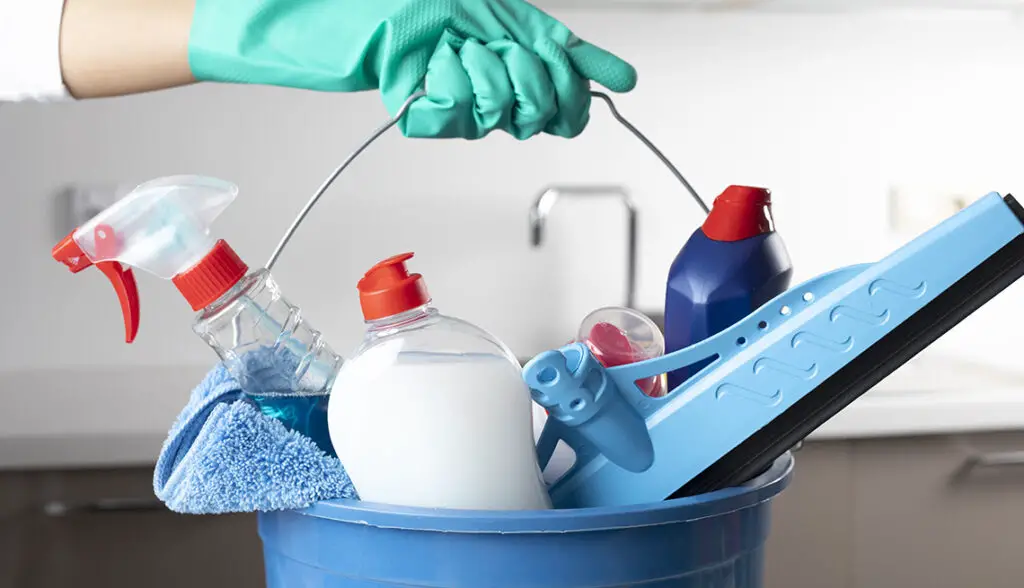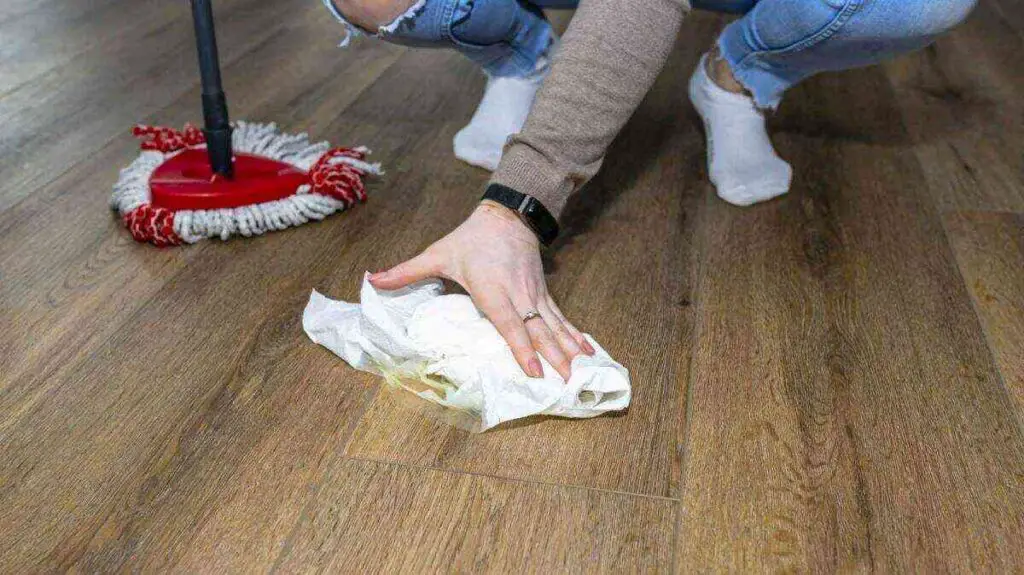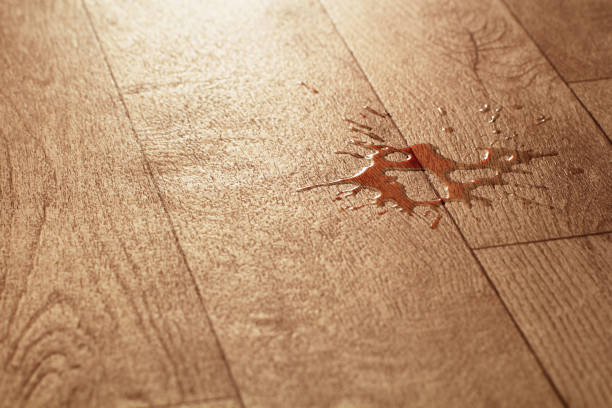Water stains on vinyl flooring can detract from the beauty and cleanliness of your home, leaving unsightly marks that seem difficult to remove. Whether these stains come from spills, pet accidents, or damp footwear, knowing the right methods to tackle them can restore your vinyl flooring to its original luster.
This guide will explore effective and safe techniques for removing water stains from vinyl flooring, ensuring your floors remain pristine and inviting. With the right approach, eliminating these bothersome stains can be simpler than you think.
Begin with Identification
Before attempting to remove water stains from your vinyl flooring, it’s crucial to closely examine the floor to assess the extent and type of the stains. This initial inspection will help you determine the most appropriate cleaning method and ensure that you do not inadvertently damage your flooring.
Begin by identifying the areas most affected by water damage. Look for variations in the color of the floor, areas where the finish appears dull, or spots that seem to have a filmy residue.
Additionally, assess whether the stains are superficial (sitting on the surface of the vinyl) or if they have penetrated deeper into the material, indicating more severe water exposure or damage.
Understanding the nature of the stains will guide you in selecting the right cleaning solutions and techniques, leading to more effective and safe stain removal.
Preparation of the Area
Clear the Area

Before tackling the water stains, it’s essential to remove any furniture, rugs, or movable items sitting on or around the stained area.
This step not only gives you unobstructed access to the affected flooring but also prevents any potential damage to your belongings during the cleaning process.
Clean Surroundings
Next, thoroughly clean the floor around the stain. This includes sweeping away any dust, dirt, or debris and wiping the surface with a damp cloth.
Cleaning the vicinity of the stain ensures that when you start the stain removal process, the dirt does not spread, causing further staining or contamination.
Choosing Your Cleaning Solution

For Light Stains
For light stains, mix a solution of warm water and mild dish soap. This mixture is gentle enough not to damage the vinyl flooring but effective in lifting superficial watermarks and stains.
Begin by dipping a soft cloth or sponge into the solution, wring it out slightly to avoid over-wetting the floor, and gently wipe the stained area. It’s important to work in sections and rinse the cloth frequently with clean water to prevent spreading the dirt.
For Tougher Stains
For more stubborn water stains, a stronger cleaning solution may be necessary. A mixture of equal parts white vinegar and water can effectively tackle these tougher marks.
The acidity in the vinegar helps break down the stains without harming the vinyl flooring. When using this solution, apply it directly to the stain using a soft cloth, and allow it to sit for a few minutes before wiping it off.
For stains that resist even the vinegar solution, applying a small amount of isopropyl alcohol on a clean cloth and rubbing it gently on the stain can be effective.
With either method, it’s crucial to rinse the area with water afterward to remove any residual cleaning solution, preventing potential damage or discoloration to the flooring.
Application of Cleaning Solution
Gentle Rubbing

Apply the chosen cleaning solution directly to the stain. It’s essential to use a soft cloth or sponge to prevent scratching the vinyl flooring. Gently rub the solution into the stained area in a circular motion.
This technique helps the solution penetrate the stain more effectively, ensuring a thorough cleaning without causing damage to the flooring surface.
Rinse and Dry
After the stain has been treated, it is crucial to rinse the area with clean water. This step removes any residual cleaning solution, which might attract more dirt or even damage the flooring if left to dry.
Once rinsed, use another clean, dry cloth to wipe the area, ensuring it is completely dry. This final step helps to prevent water spots and preserves the integrity of the vinyl flooring.
Rinse and Dry

Rinsing the Area
After successfully removing the stain, it’s paramount to rinse the area thoroughly with clean water. This step is essential to eliminate any leftover cleaning solution residue.
Failure to remove the residue could result in attracting more dirt or causing damage to the vinyl flooring over time. Use a soft sponge or cloth, dampened with clean water, and gently go over the treated area, ensuring that no cleaning solution remains.
Drying the Floor
Once the rinsing is complete, it is crucial to dry the area completely to prevent any potential water marks or damage. Using a soft towel or cloth, gently pat the wet area until it’s fully dry.
This not only prevents water stains but also restores the natural sheen of the vinyl flooring. Make sure not to leave any moisture, as this could compromise the flooring’s durability and appearance.
Repeat if Necessary
For persistent stains that do not lift after the initial cleaning, it may be necessary to repeat the cleaning process. Begin by reapplying the cleaning solution, following the same steps for application and gently working it into the stain in a circular motion.
Allow the solution to sit for a slightly longer duration this time, giving it more opportunity to break down the stain substances before proceeding with the rinsing and drying steps as detailed previously.
If the stain remains stubborn after a second attempt, consider utilizing a specialized vinyl floor cleaner designed for tougher stains. These cleaners are formulated specifically for vinyl flooring and can tackle a range of difficult stains without damaging the floor’s surface.
It’s critical to follow the manufacturer’s instructions precisely when using these specialized cleaners. Always perform a spot test in an inconspicuous area to ensure the cleaner does not adversely affect the vinyl’s color or texture.
After applying the specialized cleaner, rinse the area thoroughly with clean water and dry completely to restore your vinyl flooring’s natural appearance and prevent any potential damage.
Related Topics:
Preventive Measures
Taking preventive measures can significantly reduce the likelihood of future water stains and maintain the aesthetic appeal of your vinyl flooring. Here are some practical tips to keep water stains at bay:
Use Protective Mats:
Place high-quality floor mats at all entrances and high-traffic areas. These mats capture moisture, dirt, and debris that could potentially stain the floor. Opt for mats designed for vinyl floors to ensure they don’t discolor the flooring underneath.
Immediate Spill Response:
It is crucial to wipe up any spills as soon as they happen. The longer a liquid sits on vinyl flooring, the higher the chance it will stain or seep into seams, potentially damaging the subfloor. Use a soft, absorbent cloth or paper towel to blot spills gently.
Routine Cleaning:
Regularly clean your vinyl flooring to remove dirt and grime that can trap moisture. This not only prevents water stains but also prolongs the life and beauty of your flooring.
Avoid Excessive Water:
When cleaning, use a damp mop instead of a soaking wet one. Excessive water can seep into the edges and seams of the vinyl flooring, causing damage over time. After mopping, go over the floor with a dry mop or cloth to ensure no moisture remains.
Furniture Protectors:
Apply felt pads or protective caps to furniture legs. This not only prevents scratches but also mitigates the risk of spillages from potted plants or drink containers that might be placed on furniture directly over the vinyl flooring.
Conclusion
Maintaining vinyl flooring in pristine condition is more straightforward than one might think, with proper care and the right approach to address water stains.
By understanding the types of stains, preparing the area properly, choosing an appropriate cleaning solution, and applying it with care, you can effectively remove water stains and restore your flooring’s natural beauty and luster.
This guide has outlined practical and effective methods to tackle everything from light watermarks to more stubborn stains, ensuring your floors remain inviting and aesthetically pleasing.
Remember, the key to preventing future water stains lies in immediate spill response, routine cleaning, and the use of protective measures like mats and furniture pads.
FAQs
Can I use vinegar to clean vinyl flooring?
Yes, a solution of water and apple cider vinegar can effectively clean vinyl flooring without leaving residue. The acid in the vinegar helps remove dirt and grime without streaking.
How often should I clean my vinyl flooring to prevent water stains?
For optimal maintenance, it’s recommended to perform a general cleaning once a week and immediately deal with spills as they occur to prevent water stains from forming.
Are steam mops safe to use on vinyl flooring for stubborn stains?
It’s generally advised to avoid steam mops on vinyl flooring as the intense heat can cause the vinyl to warp or weaken the adhesive, potentially damaging the floor. Stick to the recommended cleaning methods for stubborn stains.


1 thought on “How To Get Water Stains Out Of Vinyl Flooring”